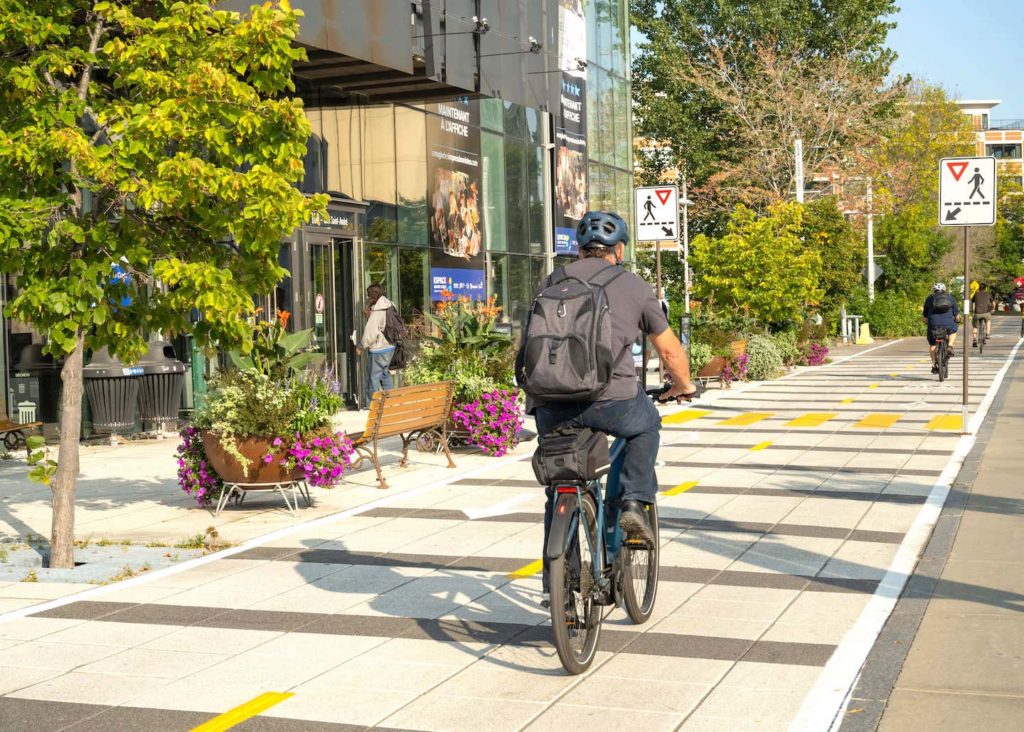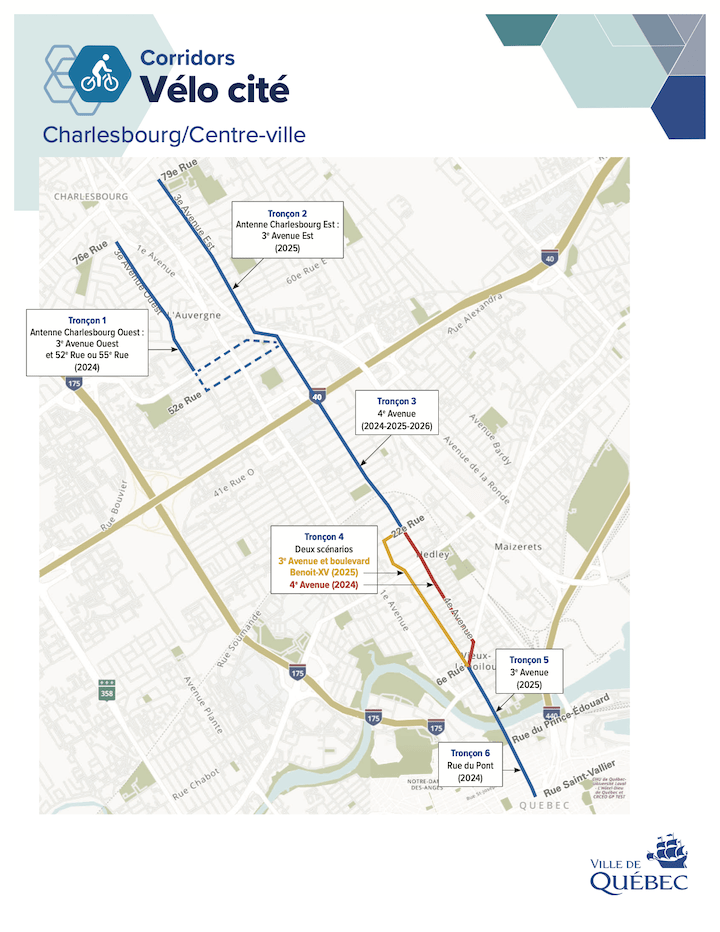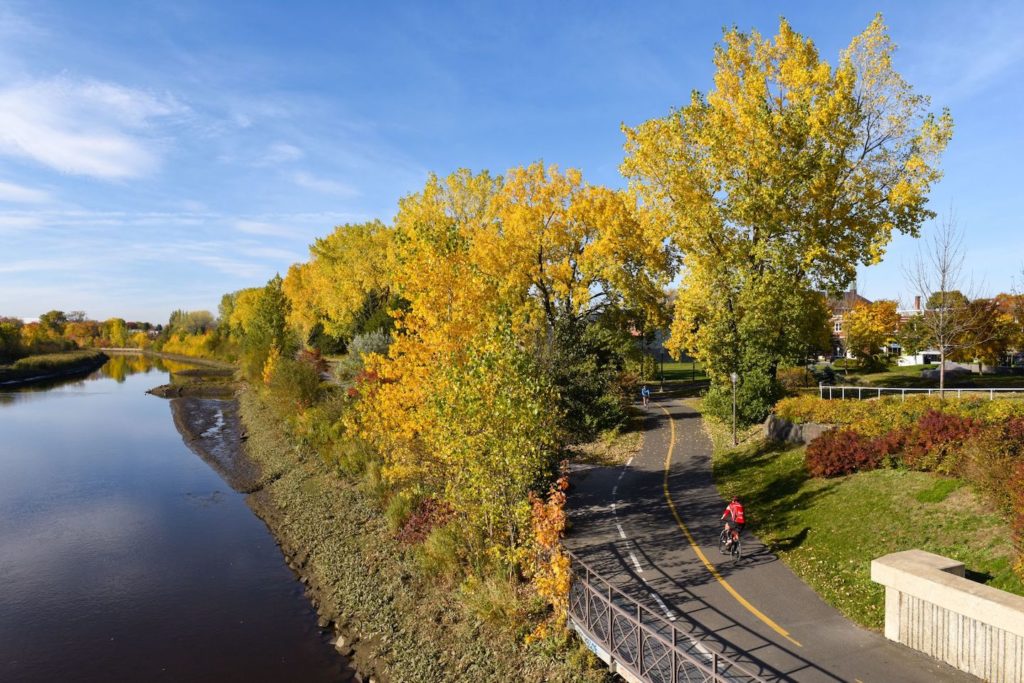January 29, 2024 - (Quebec City, Que.) The City of Quebec has unveiled the route of the first city-city corridor Vélo (CVC). Work on the implementation of this cycle link on the outskirts of Charlesbourg in the city centre will begin in 2024 and will continue in phases until 2026. This first CVC will establish a direct link between two destinations, with year-round accessibility with comfortable and safe amenities adapted to all cyclist profiles.

In 2024, it was aimed for Charlesbourg to be connected to Limoilou, and in 2025, to the city centre. The corridor, composed of six sections, will be put into operation gradually as work is carried out on these sections. The gradual improvements will improve the safety of pedestrians and cyclists through better sharing of the public highway.
“We chose the Charlesbourg/City Centre axis as the first official city-city corridor, as it corresponds to the axis with a current and anticipated high cycle potential in this sector,” said the Vice-Chairman of the Executive Committee responsible for transport and mobility, Mr. Pierre-Luc Lachance. This is an important step in our vision of building a continuous and connected gridded cycling network, thus promoting sustainable and inclusive mobility for all. ”
“I am delighted to see this first Cycling corridor come to life on the periphery and allow the citizens of the sector and more broadly the entire population to benefit from quality equipment,” said the President of the borough of Charlesbourg, Mr. Claude Lavoie. We intend to gradually set up the city’s Bike Corridors in order to serve the main mobility routes on the territory of the City. ”

Project details
Eventually, the Charlesbourg/Centre-ville CVC will consist of six sections including two western antennas and is in the Charlesbourg sector (annexed map). Its length will be 6.7 km from north to south using the eastern antenna (3rd East Avenue) with the addition of 2.3 km for the western antenna (3rd Avenue West). It will cross existing cycle links that will be upgraded, all coupled with the creation of new links.
Section 1 (Ottawa Charlesbourg West): 3rd Avenue West and 52nd Street or 55th Street (as analysed), between 76th Street and 4th Avenue East (ecalated project, 2024)
Section 2 (Charlesburg East): 3rd Avenue East between 79th Street and Corridor of Cheminots (evolving and permanent project, implementation 2025)
Section 3: 4th Avenue, 52nd Street to 22nd Street (a 2023 and enhanced in 2024, transformation into a permanent project in two phases in 2025 and 2026)
Section 4: 4th Avenue (2024) OR 3th Avenue (2025), between 22nd Street and the Road of the Duckière (continuing project, consultation on the choice of the next axis in January 2024)
Section 5: 3rd Avenue, between the chemin de la Canardière and the Rue du Prince-Édouard (continuing project, implementation 2025)
Section 6: rue du Pont, between the Rue du Prince-Édouard and rue Saint-Vallier Est (evolving project, implementation 2024)

Citizens invited to take a decision
In order to feed the City in its final planning of the CVC, consultation procedures are under way for certain sections of the route. For Old Limoilou, citizens will be invited to decide in the near future on the choice of route to be given between the two scenarios currently under consideration, i.e. 3rd or 4th Avenue for the section between 22nd Street and the chemin de la Canard.
Questionnaires are also available online to find out what is needed and what is at stake for section 1 (3rd Avenue Ouest and 52nd Street or 55th Street) and section 6 (rue du Pont). Information sessions will be held in spring 2024 for the sections scheduled for completion in the year.
Citizens interested in participating are invited to visit the City’s website in the Public Participation Activities section by selecting the project concerned.
Evolving developments
By carrying out in a section, scalable improvements will make it possible to improve the safety of pedestrians and cyclists without carrying out major works. It is a quick way to establish a cycle link with minimal interventions such as floor marking, bollards, street furniture, etc. The permanent developments, on the other hand, require major underground or surface work and make it possible to deal with multiple issues at the same time (mobility, road safety, snow removal, drainage, the possibility of renovating the networks of water and sewers at the end of their life, etc.).
A network for more efficient cycling
The Cycling Corridors are a network of active and sustainable mobility axes with a high level of comfort, which relies on secure lanes, which ensure a better sharing of the public highway in order to limit conflicts between modes of transport. This network makes it possible to accommodate a large number of cyclists in conditions attractive to all users, regardless of their age and abilities. For more information, citizens are invited to visit the City’s website here.
Read more about cycling in Quebec City here.







